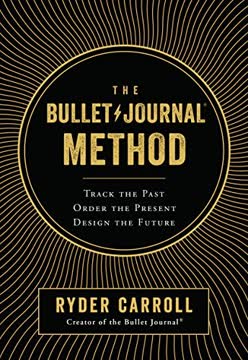Key Takeaways
1. Assertiveness: The Foundation of Effective People Skills
Assertiveness is an antidote to fear, shyness, passivity, and even anger, all of which are childlike emotions.
Balance is key. Assertiveness strikes the perfect balance between aggressive and passive behavior. It involves expressing your thoughts, feelings, and needs clearly and respectfully, while also considering the rights of others. This skill is crucial in both personal and professional settings.
Self-reflection and practice. Developing assertiveness begins with honest self-assessment. Identify situations where you tend to be passive or aggressive, and consciously practice more assertive responses. Keep a diary of your interactions and progress, and don't hesitate to seek feedback from trusted colleagues or friends.
Assertive body language. Remember that assertiveness isn't just about what you say, but how you say it. Maintain good posture, make appropriate eye contact, and speak with a clear, calm voice. These non-verbal cues reinforce your assertive message and boost your confidence.
2. The Three-Part Assertion Message for Clear Communication
Stick to the facts.
Facts first. When communicating assertively, start by clearly stating the observable facts of the situation. This provides an objective foundation for the conversation and helps avoid misunderstandings.
Express feelings. Next, share how the situation makes you feel. Use "I" statements to take ownership of your emotions without blaming others.
State needs and wants. Finally, clearly articulate what you need or want to happen moving forward. Be specific and focus on actionable solutions.
Example:
- Fact: "The report was submitted three days after the agreed deadline."
- Feeling: "I feel frustrated and concerned about meeting our project timeline."
- Need: "I need us to discuss how we can ensure future deadlines are met consistently."
3. Building Rapport Through Assertive Curiosity
Assertive curiosity should be fun.
Genuine interest. Cultivate a sincere curiosity about others' thoughts, experiences, and perspectives. This not only helps build stronger relationships but also broadens your own understanding and knowledge.
Ask open-ended questions. Use questions that encourage detailed responses rather than simple yes or no answers. This invites deeper conversation and shows that you value the other person's input.
Active engagement.
- Show that you're listening through verbal and non-verbal cues
- Follow up on responses with relevant questions or comments
- Share related experiences or insights to create a two-way dialogue
- Express appreciation for the other person's openness and insights
4. Mastering the Art of Assertive Listening
Listening gets a bit more difficult if the person you're listening to doesn't have very much to say.
Full attention. Give the speaker your undivided attention. Put away distractions, maintain eye contact, and focus on understanding their message, both verbal and non-verbal.
Empathetic response. Practice empathetic listening by putting yourself in the speaker's shoes. Try to understand their perspective and emotions, even if you disagree. Reflect back what you've heard to ensure accurate understanding.
Overcoming barriers. Be aware of common listening barriers:
- Comparing yourself to the speaker
- Mind-reading or making assumptions
- Filtering information based on personal biases
- Judging before fully understanding
- Planning your response instead of focusing on the speaker's words
Actively work to overcome these tendencies to become a more effective listener.
5. Persuasion: The Subtle Science of Influencing Others
Persuasion techniques are everywhere, and they can be powerful.
Identify needs. The key to effective persuasion is understanding and addressing the other person's needs, wants, and motivations. Take time to research and ask questions to uncover these underlying factors.
Build trust and credibility. People are more likely to be persuaded by those they trust and respect. Establish your credibility through expertise, honesty, and consistency in your words and actions.
Appeal to emotion and reason. Use a combination of logical arguments and emotional appeals to make your case. Tell stories, use vivid examples, and present data to support your position.
Persuasion techniques:
- Reciprocity: People tend to return favors
- Scarcity: Emphasize limited availability or exclusive opportunities
- Authority: Highlight credentials or expert opinions
- Consistency: Get small commitments that lead to larger ones
- Liking: Build rapport and find common ground
- Consensus: Show that others are already on board
6. Cultivating Assertive Ambition in Yourself and Your Team
Assertive ambition means wanting success however you choose to define it.
Intrinsic motivation. Focus on developing intrinsic motivation rather than relying solely on external rewards. Encourage a sense of purpose, autonomy, and mastery in your work and that of your team members.
Embrace failure. Reframe failure as a necessary part of growth and innovation. Create an environment where calculated risks are encouraged and mistakes are seen as learning opportunities.
Continuous learning. Foster a culture of continuous learning and growth:
- Provide regular training and development opportunities
- Encourage knowledge sharing among team members
- Set challenging but achievable goals
- Celebrate progress and milestones along the way
7. Resolving Conflicts Through Assertive Communication
True, your ego can get in the way, but being flexible to some extent doesn't mean you have to let other people walk all over you.
Stay calm and objective. When conflict arises, take a step back and assess the situation objectively. Focus on the issues at hand rather than personal attacks or emotional responses.
Use the assertive communication model. Apply the three-part assertion message (facts, feelings, needs) to clearly express your perspective and desired outcomes.
Seek common ground. Look for areas of agreement and shared interests. This can provide a foundation for finding mutually beneficial solutions.
Steps for assertive conflict resolution:
- Acknowledge the conflict exists
- Arrange a time to discuss the issue
- Listen to the other person's perspective without interrupting
- Express your own views using "I" statements
- Identify the root cause of the conflict
- Brainstorm possible solutions together
- Agree on a course of action and follow-up plan
Remember, the goal is not to "win" the argument, but to find a resolution that addresses everyone's needs and maintains positive relationships.
Last updated:
FAQ
What's The 5 Essential People Skills about?
- Focus on Interpersonal Skills: The book emphasizes five essential skills: rapport building, curiosity, communication, ambition, and conflict resolution, crucial for success in today's environment.
- Assertiveness as Core Element: Assertiveness is highlighted as the foundational skill for effective communication and interaction, enabling clear and respectful expression of needs and opinions.
- Practical Application: It provides actionable steps and exercises to help readers implement these skills in their daily lives, enhancing their ability to connect with others.
Why should I read The 5 Essential People Skills?
- Timeless Principles: The book builds on Dale Carnegie's timeless principles of human relations, offering insights to improve interpersonal effectiveness.
- Empowerment and Confidence: Readers learn to assert themselves positively, leading to increased confidence in interactions and potential career advancement.
- Practical Tools: Filled with practical tools and techniques, the book is a valuable resource for enhancing people skills immediately.
What are the key takeaways of The 5 Essential People Skills?
- Five Essential Skills: Mastering rapport building, curiosity, communication, ambition, and conflict resolution can significantly improve interpersonal interactions.
- Assertiveness is Key: Assertiveness is the core of effective communication, allowing expression of needs without aggression or passivity.
- Action Steps: Each chapter includes action steps to practice and apply the skills discussed, reinforcing learning.
What is assertiveness according to The 5 Essential People Skills?
- Core Definition: Assertiveness is the ability to speak and act in ways that naturally cause attentive and positive responses, balancing between aggression and passivity.
- Expressing Needs: It involves clearly expressing preferences, needs, and opinions without infringing on others' rights, essential for fair treatment.
- Foundation for Other Skills: Assertiveness is foundational for other essential skills, enabling meaningful interactions.
How can I build rapport according to The 5 Essential People Skills?
- Self-Confidence: Building rapport starts with self-confidence, which helps in establishing trust and mutual respect.
- Active Listening: Engage fully with what the other person is saying, asking questions, and showing genuine interest.
- Positive Attitude: Maintaining a positive demeanor, including smiling and expressing appreciation, enhances rapport.
What are some tactics for assertive rapport building in The 5 Essential People Skills?
- Frequent Contact: Regular face-to-face interactions foster connection and trust, with weekly meetings maintaining open communication.
- Open-Ended Questions: Encourage dialogue by asking open-ended questions, allowing others to share thoughts and feelings.
- Sharing Personal Stories: Sharing experiences creates a bond and encourages others to open up, fostering deeper connections.
What is the three-part assertion message mentioned in The 5 Essential People Skills?
- Summarize the Facts: Clearly state the facts of the situation without emotional bias to set a neutral tone.
- Express Thoughts and Feelings: Share your thoughts and feelings related to the situation, helping the other party understand your perspective.
- State Wants and Needs: Clearly articulate your wants and needs, encouraging collaboration and problem-solving.
How does The 5 Essential People Skills define assertive curiosity?
- Emotional and Intellectual: Assertive curiosity is driven by a passion for learning and understanding, involving a genuine desire to know more.
- Interactive Listening: Engage with others to draw out their thoughts and feelings, creating a dynamic exchange of ideas.
- Flexibility and Openness: Requires adjusting to others' interests and being open to different perspectives, fostering collaboration.
What are some effective communication strategies from The 5 Essential People Skills?
- Use Names: Personalize interactions by calling people by their names, showing that you value them.
- Admit Mistakes: Acknowledge when you’re wrong to build trust and respect, demonstrating humility.
- Be Specific in Praise: Offer specific compliments to make praise more meaningful, encouraging positive behavior.
What are the best quotes from The 5 Essential People Skills and what do they mean?
- "Make the other person happy about doing the thing you suggest.": Emphasizes framing requests to benefit others, fostering cooperation.
- "Gain strength from the positive and don’t be sapped by the negative.": Encourages focusing on positive interactions to enhance relationships.
- "Never underestimate the power of enthusiasm.": Highlights how enthusiasm can inspire and motivate others.
How can I apply the concepts from The 5 Essential People Skills in my daily life?
- Practice Assertiveness: Apply assertiveness techniques in conversations to build confidence and improve communication.
- Engage in Active Listening: Listen actively to others, asking questions and showing genuine interest to enhance relationships.
- Set Goals for Improvement: Identify areas for improvement in people skills, set actionable goals, and regularly review progress.
What techniques does The 5 Essential People Skills suggest for conflict resolution?
- Identify Needs: Understand the needs of both parties to find mutually beneficial solutions.
- Stay Focused on the Present: Focus on the current issue rather than past grievances to keep conversations productive.
- Use Positive Body Language: Maintain open body language and eye contact to convey respect and willingness to resolve issues.
Review Summary
The 5 Essential People Skills receives mixed reviews, with an average rating of 3.73/5. Some praise its practical advice on assertiveness and leadership, finding it useful for workplace interactions. Others criticize it as repetitive, poorly written, and overly focused on corporate settings. Many note it wasn't written by Dale Carnegie himself, leading to disappointment. Positive reviewers appreciate its tips on communication and conflict resolution, while critics argue it lacks depth and originality compared to Carnegie's earlier works.
Similar Books










Download PDF
Download EPUB
.epub digital book format is ideal for reading ebooks on phones, tablets, and e-readers.














